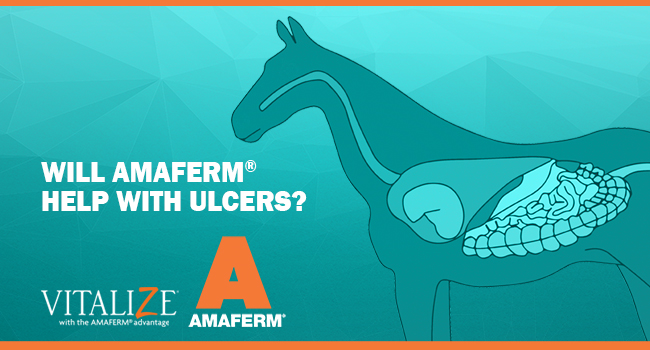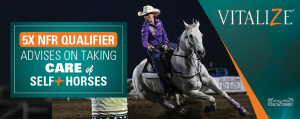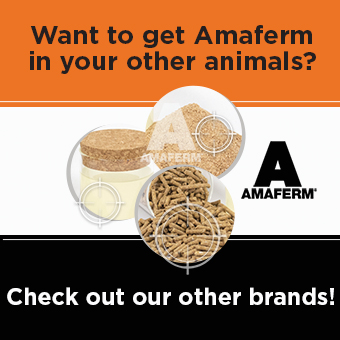Does your horse spook, bolt, rear, buck or kick while riding? Is your horse “girthy”? Is your horse nervous or does it worry? Does your horse have a hard time holding weight? Is it a picky eater? Does it have a dull coat? Has your horse just experienced a recent trauma in their life? Have they been recently imported, moved to a new barn or had their buddy taken away? Has your horse’s behavior gotten worse despite training where it should be getting better? If the answer to any of these questions is yes, your horse may have an ulcer.
Equine ulcers fall into two primary categories – gastric (stomach) ulcers and hindgut ulcers. By far the most common and easily diagnosed type of ulcer, gastric ulcers are caused by excessive amounts of stomach acid. Elevated acid levels compromise the stomach’s lining and eventually lead to the formation of painful lesions and sores. These sores are repeatedly irritated by stomach acid and can produce significant health issues, ranging from grouchiness to colic and, in severe cases, death.
Gastric or stomach ulcers occur more frequently in horses that perform athletic activities, with the highest frequency found in Thoroughbred racehorses (80-90%), followed by endurance horses (70%), and show horses (60%). Researchers have found that exercise increases gastric acid production and decreases blood flow to the gastrointestinal (GI) tract. In addition, when horses exercise, the acidic fluid in the stomach splashes and exposes the upper, more vulnerable portion of the stomach (squamous mucosa) to an acidic pH.
Why are gastric ulcers so common in horses? Because humans decide what and when they eat. Horses cannot handle large amounts of food; rather, they are built to graze and eat frequent, small portions of feed for extended periods of time. In a natural grazing situation, the horse requires a steady flow of acid for digestion, so a horse’s stomach produces acid 24 hours a day, seven days a week – up to nine gallons of acidic fluid per day, even when not eating. In a natural, high-roughage diet, the acid is buffered by both feed and saliva.
When horses are fed two times per day, the stomach is subjected to a prolonged period without feed to neutralize the acid. Furthermore, high-grain diets produce volatile fatty acids that can also contribute to the development of gastric ulcers. Also, chronic administration of some non-steroidal anti-inflammatory drugs such as phenylbutazone or bute can decrease the production of the stomach’s protective mucus layer, making it more susceptible to ulcers.
In addition, horses do not efficiently process large amounts of carbohydrates, thus much of the feed consumed by today’s horses passes through the stomach and large intestine before acids and digestive juices can adequately digest it. Once carbohydrates reach the cecum and large intestine, they are bound to produce lactic acid and gas, lowering pH levels and negatively impact the balance of helpful gut microbes. The result is an increased risk for hindgut acidosis, colic and ulceration.
Once a horse gets gastric ulcers they may be treated with an FDA approved drug, whose function is to stop acid production in the stomach. GASTROGARD contains specially formulated omeprazole that acts at the source of acid production. GASTROGARD inhibits the proton pump that produces stomach acid. With fewer active pumps, the horse’s stomach produces less of the stomach acid that causes ulcers.
However, both gastric and hindgut ulcers are considered a digestive problem, so after treatment, preventative measures should be put into action. A healthy digestive tract can provide symptomatic relief to horses with ulcers. Beneficial bacteria reside in the stomach of every horse. In addition to the causes of ulcers discussed earlier in this article, many researchers believe that gastric ulceration is caused by bacteria called Helicobacter pylori or other members of the Helicobacter species. For example, H. equorum DNA has been isolated from fecal samples from horses verified with gastric ulcers by endoscopy (Veterinarni Medicina, 54, 2009 (12): 577–582).
Studies have shown that increasing the amounts of beneficial microbes by using prebiotics (such as Amaferm®) can decrease the incidence of gastric ulceration in both the gastric glandular and nonglandular mucosa. Increasing the amount of beneficial microbes also limits the amount of opportunities for bad pathogens to inhabit the gut. Keeping a stable and abundant beneficial microbe population in the hindgut will also decrease the incidence of colonic ulceration.
That’s where Amaferm comes in. Amaferm®️ is a prebiotic designed to enhance digestibility by amplifying the nutrient supply for maximum performance. It is research-proven to increase intake, digestion and absorption. A healthy microbial population helps maintain a neutral pH in the hindgut. A neutral pH reduces the incidence of colonic ulcers (which often accompany stomach ulcers).
While your horse can get his daily dose of Amaferm from all Vitalize® products, Vitalize Equine High Performance has been specifically formulated with the ulcer-prone horse in mind. It contains high levels of calcium that provide a protective layer in the stomach for natural prevention against ulcers. To learn more about this product and how your horse can get a good gut feeling, click here.



